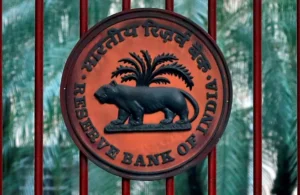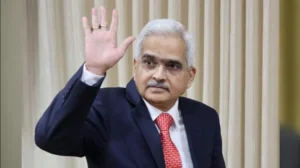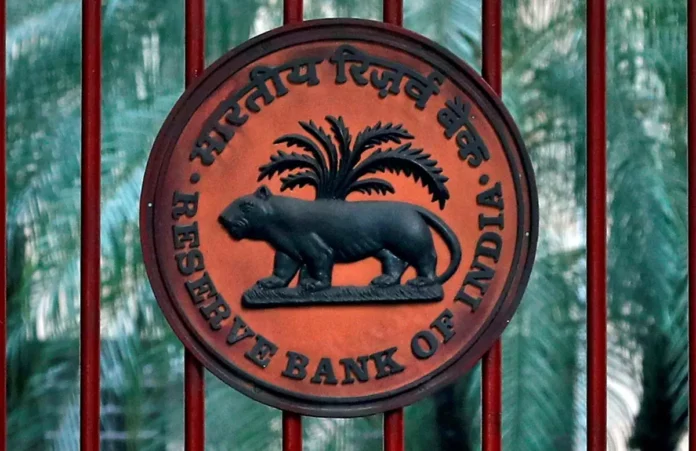The Reserve Bank of India (RBI) maintained its hawkish stance today, choosing for a pause in its RBI monetary policy the live announcement. The RBI restated its 4% inflation target, ignoring the larger 2-6% range that had previously been considered, emphasizing the significance of price stability.

Today, October 6, the Reserve Bank of India (RBI) presented its fourth bimonthly monetary policy. On expected lines, the Monetary Policy Committee (MPC) led by RBI Governor Shaktikanta Das preserved the current status unchanged on rates and stance. The move comes in the face of global economic uncertainty, urging the central bank to exercise caution in monetary policy.
RBI Monetary Policy: 4% Inflation Target
The RBI’s decision to maintain a hawkish posture reflects the central bank’s cautious approach in the face of a complex global economic landscape. While numerous central banks across the world have adopted lenient policies, the RBI’s decision indicates its commitment to tackling inflationary pressures and safeguarding the Indian economy’s stability.
One of the most important aspects of the live announcement was the RBI’s reiteration of its 4% inflation objective. This clarification, emphasizing a specific objective rather than a broad range, demonstrates the Fed’s determination to anchor inflation expectations. By focusing on a single goal, the RBI hopes to establish a clear and stable policy framework that will reassure markets and investors alike.
Economic Context:
The global economy has been confronted with a number of issues, such as supply chain disruptions, shifting commodity prices, and geopolitical conflicts. These variables, together with the continued consequences of the COVID-19 epidemic, have produced an unpredictable situation.
In this environment, the RBI’s choice to maintain a hawkish approach demonstrates the central bank’s intention to navigate these issues prudently and protect India’s economic stability.
The RBI’s Priority to Pricing Stability:
RBI Governor Shaktikanta Das emphasized the central bank’s commitment to price stability and long-term economic growth. He indicated that the RBI would keep a careful eye on important economic indicators including price inflation, rate of growth, and developments in the global economy.
From the perspective of retail investors, we are nearing the end of the interest rate hiking cycle. Thus, retail investors should lock their cash in long-term fixed deposits at higher interest rates over the next 3-6 months.
They can stagger their investment across a number of smaller FDs across multiple commercial and small finance banks, as well as NBFCs, depending on the purpose and timeline of their investment. The central bank remains ready to alter its policies quickly in response to developing problems, highlighting its proactive commitment to protecting India’s economic interests.

Impact on Financial Markets:
Financial markets suffered immediate volatility following the live announcement as investors digested the news. The markets did, however, stabilize as players obtained a clearer understanding of the RBI’s reasoning.
Deputy Governor Michael Patra Expects a Normal Monsoon According to Deputy Governor Michael Patra, the Reserve Bank of India continues to predict a typical monsoon. Rainfall in India’s rice-growing regions has been insufficient. The North East and East India continue to have double-digit rainfall deficits. While that is being corrected, the RBI remains on high alert.
Analysts remarked that the RBI’s decision, together with its precise disclosure regarding the inflation target, gave much-needed clarity, boosting market confidence in the Indian economy’s long-term stability.
Opinions of Experts:
Economists and financial professionals have weighed in on the RBI’s decision. Many people welcome the central bank’s ongoing commitment to price stability, viewing it as a wise step in the current global economic environment.
According to ANAROCK Research, housing sales in the top seven cities reached a new high in Q3 2023 (despite the typically slow monsoon season) with 1,20,280 units sold compared to over 88,230 units sold in Q3 2022, representing a 36% year-on-year increase. We can expect the trend to continue thanks to the stable repo rate and, as a result, stable home loan interest rates, said Anuj Puri, Chairman of ANAROCK Group.
However, other experts are concerned about the possible obstacles provided by the precision of the inflation target, emphasizing the necessity for flexibility in the face of changing economic conditions.

Conclusion
The Reserve Bank of India (RBI) maintained its hawkish stance during its fourth biweekly RBI Monetary Policy announcement. The October 6 decision reaffirmed the RBI’s commitment to a 4% inflation target, emphasizing the critical need for price stability in the face of global economic uncertainty.
Governor Shaktikanta Das emphasized the RBI’s commitment to long-term economic growth and the careful monitoring of important indicators. Initial market turbulence followed the news, but clarity on the inflation objective restored confidence.
While analysts applauded the RBI’s commitment, questions regarding the precision of the inflation target underscored the necessity for flexibility in adjusting to changing economic situations.
Read More Article Related: “Inflation Above Target: RBI Holds Steady on Rates”
